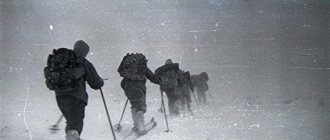In 2020, on one of the federal channels, fashion designer Vyacheslav Zaitsev openly spoke about his illness and shared his plans for the near future. It must be said that rumors about the couturier’s serious condition have been circulating for a long time. Zaitsev left his post as host of the “Fashionable Sentence” program precisely because it was difficult for him to withstand hours of filming. Viewers also often complained about the presenter’s poor diction and the stiffness of his movements, which in fact turned out to be symptoms of a serious illness. What disease prevents Vyacheslav Zaitsev from continuing to create normally for many years, how does he feel now, and what do the doctors say? More on all this further!
Biography
He was born in 1938 in the “city of brides” - Ivanovo, which was then famous for its textile academy, which attracted girls from all over the country. Despite the fact that in Soviet times the concept of “high fashion” did not exist, the couturier was able to develop this industry to unprecedented proportions and earned the respect of the West, and then the Soviet people.
For many years the master created collections, but received only disapproving reviews of his work. Only 30 years later, when he was already very popular among Western fashion connoisseurs, his talent was noticed. He worked as an artistic director at a garment factory in the city of Babushkin, but the public was not ready for colored padded jackets and painted felt boots (by the way, Zaitsev personally painted them with gouache before the show). Then he performed the same position, but in the experimental workshop of the all-Union fashion house.
Finally, the master was able to create exclusive outfits for theater, cinema, and figure skating performances. In the biography of fashion designer Vyacheslav Zaitsev, illness once became a motivating factor. In 1971, a terrible accident happened in his life, after which he had to undergo a long rehabilitation. At this time he thought a lot about the future. Zaitsev did not stop and with renewed vigor approached the improvement of the fashion industry, turning a small atelier into a Moscow Fashion House. Already in 1988, the first “Russian seasons” took place in Paris, represented by the collection of Vyacheslav Zaitsev, thanks to which he acquired the status of an honorary resident of this French city.
Then the master won the “Best Five Fashion Designers of the World” festival, and in the early nineties he developed a collection that was unusual for a couturier of this level - police uniforms. Over the course of half a century devoted to fashion, Zaitsev became a style icon and a favorite fashion designer of many Russian pop stars, and also received the title “Honorary Artist of the Russian Federation.”
Only old men go into battle. About the ruin of the fashion house of Vyacheslav Zaitsev
Photo: Alexander Avilov/Moscow City News Agency He is actually an absolute stoic. There are such reinforced concrete people who seem to be unaffected by anything. Neither years, nor crises, nor car accidents. At the age of 33, Zaitsev was in a serious accident - he was cut out of his car with an autogenous gun. He spent nine days in intensive care between life and death. After this, the doctors gave a disappointing verdict: the leg cannot be saved, it must be amputated. Many years later, he said that he mentally imagined how he would hobble along the Kuznetsky Bridge in white and black. Bowler hat, vest, wide trousers, black glasses, stick - a chic look. Why not? But then I decided that I had to fight to the end. Refused all anesthetics. He endured such pain that others lost consciousness. He overcame everything, defeated everyone, and six months later he was again flying around Kuznetsky without any stick. Up down.
I remember him as a young man, just over 30. In a cream-colored raincoat that reached to the floor, fluttering in the wind. Everyone is wandering around, twisted from the cold and eternal winter, wrapped in their coats, mohair scarves and bunny hats. And here is Slava with a blush all over his cheek, the prince-king. Chest wide open, life wide open. All in plans, plans, dreams. He lived by fashion, created fashion, loved fashion. He didn't care where or with whom. You can do it at home on the kitchen table or in the studio of the All-Union House of Models, or on the stage of Sovremennik. What dresses Tatyana Lavrova wore in The Cherry Orchard! And Marina Neelova’s crimson silks for “Lorenzaccio”! Or the epoch-making robe of Alla Pugacheva, like a colorful, immense parachute that covered the entire native stage. This was also invented and sewn by him, Slava Zaitsev, the number 1 couturier of the Soviet Union.
We didn't have anyone before him. Some boring ladies in identical English suits and gauze scarves with long pointers in their hands, like high school teachers. And here suddenly Slava in his a'la russe blouses, clingy colored trousers, with poems of his own composition instead of memorized dull texts about “trends of the current season.” He managed to exist all these years outside these trends, outside commercial calculations and inevitable intrigues. Always remain yourself, be faithful once and for all to your chosen style and your ideas about beauty. This was his undoubted strength, but also his vulnerability.
Where it is necessary to stun, enchant, shake the imagination, he has no competitors. Where business strategy, marketing, industry begins, it becomes boring before our eyes
Zaitsev is a typical lone artisan. Self-taught artist. Where it is necessary to stun, enchant, shake the imagination, he has no competitors. Where business strategy, marketing, industry begins, it becomes boring before our eyes. He was never interested in this. Even the legendary Marusya perfume, which he invented at the apogee of his fame and fashion for everything Russian, now, as it turns out, does not belong to him, but to some Western companies.
For many years, Zaitsev was saved by the fact that there was no fashion industry in the USSR. Almost like sex, according to a memorable statement from the mid-80s. Although, of course, everything happened, you weren’t supposed to talk about it out loud. “Fashion cannot exist where there is a shortage” - for these words in 1979, Zaitsev was expelled from the All-Union House of Models. At the same time, he will be remembered for his friendship with Pierre Cardin, his love for France, the cult of bright, ringing color in the midst of general dullness and facelessness. He will go nowhere. To some local atelier. Veliky Zaitsev is in a studio where they send old coats to be remade.
But he won here too. When the list of his high-ranking clients was replenished with the name of Raisa Maksimovna Gorbacheva, a real chance arose to change his life. In 1982, the atelier was renamed the Moscow Fashion House, and in 1988 Zaitsev became its permanent director.
“Glass” on Mira Avenue went to Zaitsev with the light hand of Gorbacheva, as a long-awaited gesture of recognition, a reward for patience during their many hours of fittings and years of homelessness. In the person of Slava Zaitsev, domestic fashion acquired the status of a matter of national importance. And for a long time it seemed that something was about to begin in earnest and for a long time. But, as often happens, it soon became clear that it was easier to rent out square meters than to pore over new collections that no one was buying - otherwise it would simply be impossible to cope with this multi-story glass colossus. And it was impossible for a domestic fashion house to compete with Western brands that filled all the capital’s counters and podiums without state support, at least in the form of an established light industry.
Photo: Sergey Vedyashkin/Moscow City News Agency
Today, Russian fashion, despite some successes, remains a refuge for marginalized people and enthusiasts. There is no longer a shortage, but there is no established industry either. And even on the local field, where such recognized grandees as Valentin Yudashkin, Igor Chapurin or Tatyana Parfenova confidently settled, the Zaitsev House looks like a monument to the 80s.
To become a completely museum, it is still too early, to be a truly relevant fashion institution, it requires a different acumen, energy, turnover and advertising budgets. Where can I get them?
The dry facts look like this: The fashion house of 81-year-old Russian fashion designer Vyacheslav Zaitsev has been on the verge of ruin for a year now. At first, Zaitsev complained that he was working “virtually from scratch” - there were no clients, and renting a house in the center of Moscow was too expensive. Then it turned out that the rent debt was significant - 58.4 million rubles. The official Instagram page of the Fashion House has not been maintained since 2017; the last posts on Facebook and VKontakte were published in 2018. In June, the Fashion House celebrated its 37th anniversary. At the same time, due to debts to the Moscow heat supply organization, hot water was turned off in the building in the spring.
I know that some hopes were pinned on the arrival of Yegor Zaitsev at the Fashion House, but the final transfer of power to the crown prince never took place: some kind of showdown, resentment, and intrigue began. Delving into this now is just as unpleasant as delving into the claims of the Moscow City Property Agency for fantastic multimillion-dollar sums. It seems that now someone really needs to get real estate in the center of the capital. It is clear that after two strokes, Zaitsev is no longer the same fighter as before.
In a black bowler hat, leaning heavily on a stick, he returned to the same appearance that he tried on after the accident more than 40 years ago. Then he won. Today he faces a new, no less difficult battle.
Creative plans
Despite his illness, fashion designer Vyacheslav Zaitsev, at 80 years old, is still planning to release new collections. Relatives say that he constantly comes up with models of his beautiful dresses and thinks through ideas for the show. Journalists managed to find out that the “autumn-spring 2018” collection is being prepared for release, but the master himself has not yet given any comments on this matter. Last year, the maestro, according to tradition, opened the Russian Mercedes-Benz Fashion Week, but this year he transferred his powers to other people.
Childhood and adolescence
The childhood of the future famous couturier was during the difficult war and post-war years.
His father, Mikhail Yakovlevich, was captured at the front, was among many convicted for this, and after the end of the war was sent to a camp as an “anti-Soviet.” Maria Ivanovna, Vyacheslav’s mother, had to raise her youngest son and his older brother herself. The woman worked continuously to put her sons on their feet - she washed floors in the hallways and washed clothes. The boys, in turn, tried their best to help their mother with the housework, did well at school and tried not to cause her unnecessary trouble.
Vyacheslav Zaitsev in childhood
Despite difficult living conditions, Slava grew up as a cheerful, cheerful child, charming and charismatic. From an early age, he dreamed of becoming an artist and enjoyed performing at impromptu concerts, singing, dancing, reading poetry, and drawing posters. At the age of seven, he sang in the choir and even won a creative competition.
The young man failed to enter the music school - the shameful stigma of “the son of an enemy of the people” prevented him. For this unfortunate reason, Zaitsev decided to take the documents to the textile technical school, which usually had a shortage. Moreover, he had to study in the “textile capital” of the country - Ivanovo, where Vyacheslav was from.
Vyacheslav Zaitsev had to learn the craft in the “textile capital” - his native Ivanovo
Studying was easy for him, and after graduating from technical school with honors, Zaitsev decided to continue his education in Moscow. He felt that he had chosen the right path in life and was eager to realize the countless creative ideas that were born in his head.
Illness in the biography of fashion designer Vyacheslav Zaitsev: what ails the great couturier
For many years, Vyacheslav Zaitsev has been struggling with Parkinson’s disease, and also has difficulty moving due to sore joints. In a recent interview, he shared with journalists that in order to maintain his fragile health, for the first time in his life he visited a sanatorium in Karlovy Vary. This was especially necessary for sore legs. It is becoming more and more difficult for Zaitsev to cope with his illness every year. Doctors are trying to slow down the development of Vyacheslav Zaitsev’s disease, but it is not yet possible to completely cure it. The master himself believes that he will live to see the moment when scientists can find a cure for Parkinson’s disease.
Biography of Vyacheslav Mikhailovich Zaitsev
He was born in 1938, three years before the Great Patriotic War, and fully experienced all its hardships. My father went to the front, was captured, escaped and reached Berlin. This is an act of a hero, but for the Land of Soviets it is a reason to put an innocent person in a prisoner of war camp.
One day, when once again he and his mother were visiting their father in prison, robbers broke into the house. The woman ended up in the hospital, and Slava found a way out of the situation. Having a well-trained voice, he decided to sing near the store to earn food. A hard life tempered the character of the future fashion designer; a resilient character became a characteristic feature in the biography of Vyacheslav Zaitsev. “Sunny boy” - that’s what his mother and those around him often called him.
When my father returned from the camp, he went to work in a local cultural park as a mass worker. Slava’s relationship with him and his older brother did not work out. The older brother tried in every possible way to break the younger brother; during games, using force, he forced Slava to pretend to be a fascist, tied him to the bed and mocked him in every possible way. The older brother never made it in life, he was imprisoned twice and so on.
Maria Ivanovna, the mother of the future couturier, passed away at the age of 72; she adored children. But if there was no need to worry about the fate of the youngest son, the eldest caused a lot of anxiety. This fragile woman, despite her hard work (she worked as a nurse and also did laundry for pay), remained surprisingly feminine until the end of her days. And for the grateful youngest son she was the standard of a real woman. Vyacheslav Mikhailovich likes to repeat that everything good comes from his mother. Everyone who follows the biography of Vyacheslav Zaitsev remembers and knows about this.
Certificate of disease
Parkinson's disease is a serious disease that affects the central nervous system. As the disease progresses, it becomes difficult for a person to control his arms and legs, and frequent trembling appears in them. Also, people suffering from this disease are characterized by impaired facial expressions. In the vast majority of cases, Parkinson's disease leads to disability and mobility in a chair. Many people who are faced with this disease fall into a depressed state and also complain of a constant loss of energy and sleep disturbances.
Furtseva's ears
Vyacheslav Zaitsev always adhered to the principle formulated by Alexander Griboyedov : “Pass us more than all sorrows, both lordly anger and lordly love.” Many people offered the designer to become a court tailor - from the General Secretary of the CPSU Central Committee Leonid Brezhnev to the First Lady Raisa Gorbacheva , but he did not agree to work with everyone. When the couturier asked why Raisa Maksimovna declared everywhere that she sewed his outfits, she raised her eyebrows in surprise: “Isn’t that nice for you?”
Zaitsev told how he once did something for the daughter of Alexei Kosygin , Chairman of the Council of Ministers of the USSR. When everything was ready, the important daughter invited the fashion designer to the theater. Saying goodbye, she handed Zaitsev an envelope with a fee. The amount turned out to be less than agreed upon: the cost of the ticket was subtracted from it. By the way, the textile institute, which Vyacheslav Zaitsev graduated from in 1962, will be named after Kosygin.
Without exaggeration, his favorite client was Ekaterina Furtseva , Minister of Culture. She approached the fashion designer on the eve of celebrations dedicated to the tenth anniversary of Yuri Gagarin’s into space. Zaitsev sewed a little black dress that suited her amazingly. On his recommendation, she got her ears pierced and began wearing diamonds.
Lyudmila Putina visited the Fashion House several times . And for Svetlana Medvedeva, the fashion designer made sketches and sent them to the studio where the costumes were sewn for the top officials.
Flower brooch - “insignia” of Edita Piekha
Status for 2020
The condition of the world-famous fashion designer is very serious: in 2018, he already had surgery on his joints. Doctors fitted him with a titanium prosthesis to reduce pain while walking. He is also now preparing for a second knee surgery. For his birthday, he wished himself well. “Everything that happens to me depresses me,” fashion designer Vyacheslav Zaitsev says sadly about the disease that brings him so much pain.
The master is supported by his close relatives during this difficult time: his son, granddaughter and ex-wife. By the way, he maintained an excellent relationship with the latter after the divorce, despite the fact that they broke up when their common child was only nine years old. The ex-wife states that the doctors are very optimistic and say that such a strong-willed person as Vyacheslav Zaitsev will cope with the disease easily.
Fashion designer career
Having graduated with honors from a textile technical school, driven by a great desire to create new models, projects, and so on, Vyacheslav decided to go to Moscow. Implicitly, he was more than convinced of the correctness of his decision.
The young man entered the Moscow Textile Institute easily and on the first try. All five years he studied well and received a Lenin scholarship. After graduating from a university assigned to Babushkino near Moscow, he had to work at a workwear factory for three whole years.
“Sunny Boy” did not lose heart; thanks to his work, ordinary padded jackets and padded jackets turned into designer clothes, painted and updated. They were accompanied by felt boots that shone in an unusual color. This was the beginning of a successful career in the biography of Vyacheslav Zaitsev, whose anniversary was celebrated in 2020.
Soon the fame of the Soviet fashion designer leaked to the West. Famous fashion figures began to come to Babushkino, including Pierre Cardin. In the Soviet Union, he became widely known only after thirty years of experience. Only in the late eighties did Slava Zaitsev manage to travel to Paris, where his collection was a stunning success.
Activities of Vyacheslav Zaitsev
After training, according to the distribution, he ended up at the Experimental Technical Garment Factory. There he was immediately appointed to the position of artistic director. We can say that right away the future famous fashion designer began creating a collection of clothes for working women in the village and the entire region. Not only the cut, but even the color scheme was radically different, not the same as what village workers were used to seeing. However, after discussion, the model was rejected. But this was not a failure of Zaitsev, because after a while an article “He dictates fashion to Moscow” was published in one of the popular magazines and it was a story about Zaitsev.
Next was the work of artistic director at the experimental art center of the House of Models, where he worked for only thirteen years. During this time, he created seasonal collections for light industry enterprises of the union. In addition, the talented fashion designer worked a lot on his original models.
Bust of Vishnevskaya
The public saw the first stage costumes of Vyacheslav Zaitsev in the production of “Crazy Day, or The Marriage of Figaro” by the Satire Theater. The fashion designer sought to combine theater and fashion. Thus, the sky-blue satin dress of Countess Rosina received exquisite drapery, the scarlet suit of the servant was decorated with small round mirrors, and the black velvet tunic - Figaro's short jacket - was embroidered with gold threads.
While working on the play, the fashion designer met Vera Vasilyeva . She was a prima, winner of two Stalin Prizes. Zaitsev was openly timid in front of her, and when, during the fitting, he needed to cut off part of the lace in the neckline, he did not know how to do it more deftly. “Work, Slavochka, calmly,” Vera Kuzminichna gently encouraged him.
Since then, the actress and fashion designer have been friends. Zaitsev created another interesting stage image for her - the countess in “The Queen of Spades” at the Maly Theater. Initially, Andrei Zhitinkin gave this role to Elina Bystritskaya . “Warming up” the performance, the director remembered a performance once staged on the stage of the Maly Theater, where the countess-grandmother was in a wheelchair all the time. This categorically did not suit Elina Avraamovna. “Bystritskaya walked only in high heels! There was no question of any stroller,” recalls the fashion designer. For the countess, he prepared sketches of luxurious dresses, including scarlet ones. Unfortunately, the actress’s plans changed, and she left for treatment, and the role of the Countess was offered to Vera Vasilyeva, who coped with it brilliantly.
Dmitry Hvorostovsky did not immediately acquire his usual luster
One of the fashion house's regular clients was Dmitry Hvorostovsky . The opera singer came to the custom tailoring studio with his first wife, Svetlana Ivanova . He did not yet wear his signature snow-white hair and seemed unkempt, and with every smile he flashed a gold tooth. Hvorostovsky looked a little provincial, which is why he turned to the fashion maestro with a request to create his wardrobe for a trip to Italy. “I sewed the first frock coat for Dmitry from crimplene-type fabric. It turned out to be incredibly heavy, but Dmitry wore it with pleasure and considered it a talisman. And I was very worried when a suitcase with a frock coat was stolen at the airport in Paris.”
Opera stars Elena Obraztsova and Galina Vishnevskaya were also regulars at the Fashion House. The atelier employees recall the salty anecdotes that Obraztsova sounded incomparable. The regal Vishnevskaya also did not portray a diva. She had a rather prominent bust, and she ordered bandages to keep her breasts looking neat.
Zaitsev made a dress for Lyudmila Kasatkina’s The outfit was paired with a boa made of white fox. We agreed that after the celebration this item would return to the Fashion House. But Kasatkina could not part with it, and the couturier, without hesitation, gave the collectible boa to the beautiful actress.
For Nadezhda Babkina’s , for the 40th anniversary of the Russian Song Theater, Vyacheslav Mikhailovich came up with costumes in black and white, which was quite unexpected.
Lyudmila Kasatkina got the boa she liked for nothing










